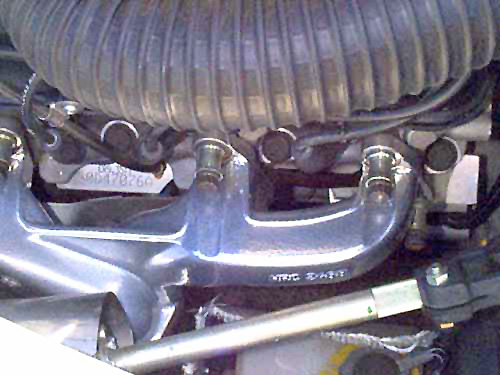 Jw and I have dealt with scores of the pre-1972 +8 exhausts. We
too have the same opinion of the other Plus 8 exhaust cogniescente
and the wider Rover community who used them.
Jw and I have dealt with scores of the pre-1972 +8 exhausts. We
too have the same opinion of the other Plus 8 exhaust cogniescente
and the wider Rover community who used them. | They made that weakness worse once they
started using short gussets to move the breaking point with earlier
car at the bulkhead. They ended the gussets at the same hole! When used
for an exhaust pipe, the constant high heat through these holes
regularly
causes metal expansion and contraction at the weak point
which makes matters worse. A
Perfect Storm. As in other instances, they continued having that hole
even with Morgans that never needed or used
it after they stopped exiting through the chassis and exited, more
wisely, through the valences. To make holes in the valences is simple. even I can do it!!! But it is more tricky with these early Plus 8s. Apparently, Morgan forgot to inform the chassis manufacturer of this move and the chassis kept arriving for years with this unnecessary hole. The only perfect solution is a chassis replacement. However, one can try welding a long reinforment piece +/- 2 feet along the bottom of the chassis at the weak point BEFORE a crack develops. |

 the
hole is not small. Ideally, this shoulld be done with
the wings removed so the valance could be removed and flanged for
strength once it is marked out on the vehicle.
I personally have made these valence holes with later cross-over
single pipe Plus 8s re-adopted by Morgan in 1986/7 with the valences in
situ. In the former case, the entire steering column should also be removed.
The several cars I have seen years ago with this conversion were having
other work done, so this was the case, as there is very little room to work otherwise.
the
hole is not small. Ideally, this shoulld be done with
the wings removed so the valance could be removed and flanged for
strength once it is marked out on the vehicle.
I personally have made these valence holes with later cross-over
single pipe Plus 8s re-adopted by Morgan in 1986/7 with the valences in
situ. In the former case, the entire steering column should also be removed.
The several cars I have seen years ago with this conversion were having
other work done, so this was the case, as there is very little room to work otherwise.| Here is a
comment from the world's largest Morgan exhaust specialist and
installer with a decade's long impeccable reputation:
1. The orginal manifolds crack in the middle, They can be cast welded or stitched but it is a specialist job. |
 |
 |
 |
 |
 |
 |
